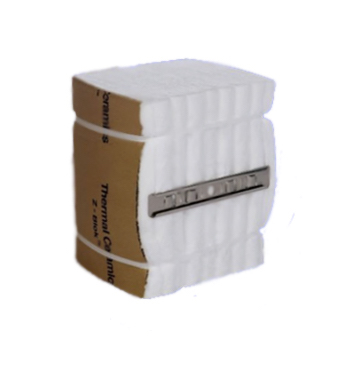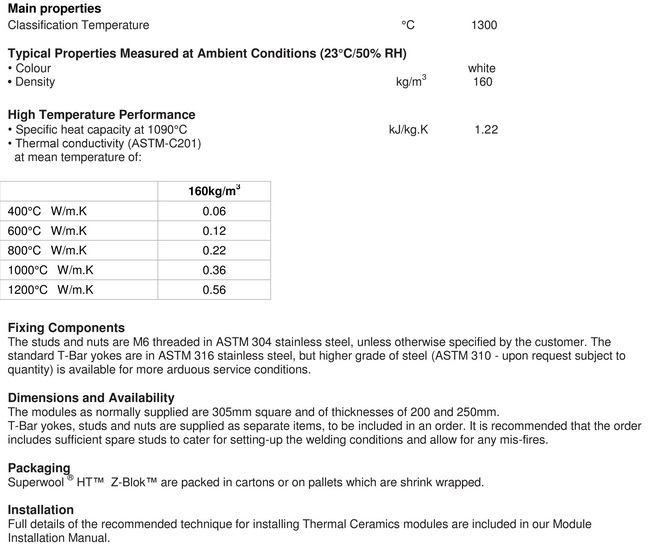
Price: on request
Superwool® HT™ Z-Blok™ are convoluted blanket modules which combine the excellent thermal characteristics and proven service performance of Morgan Thermal Ceramics’ Z-Bloks™ with the ease of installation and versatility of the T-Bar anchoring system. They are made from spun-fibre blanket, folded and precompressed to a specified density, and held in position with 2 stainless steel tubes (standard tubes are ASTM 316 stainless steel, higher grade of steel - ASTM 310 is available for more arduous services conditions), mounted transversely within the module. The modules are supplied encapsulated in plastic film, which ensures dust levels are kept to a minimum during installation. During installation, the modules are further compressed, the resilience of the fibre and recovery after the restraining bands are removed ensuring tightly compressed inter-modular joints.
Type:
convoluted anchored modules made from high temperature insulation wool.
Classification temperature:
1300 0C (ENV 1094-3)
The maximum continuous use temperature depends on the application. Please contact Morgan Thermal Ceramics for advice.
Features:
The Superwool® HT™ Z-Blok™ module offers several advantages to both the furnace constructor and the enduser.
• the Superwool® HT™ Z-Blok™ module maintains the light weight, thermal efficiency and resistance to thermal shock characteristics of ceramic fibre linings;
• the decompression of the blanket folds gives tightly sealed inter-modular joints;
• the resilience of the blanket can accommodate some flexing of the furnace casing without opening gaps between modules;
• the unique T-Bar fixing system is exceptionally simpleand quick to install;
• where damage occurs, individual modules can be easily replaced;
• the anchor system is buried inside the module and close to the casing. The metal components are therefore maintained at low temperature;
• the ASTM 316 stainless steel has a high corrosion resistance and maintains its creep strength to a relatively high temperature;
• the system ensures that the fibre is pulled back into intimate contact with the furnace casing or any substrate with no bridging of irregularities, thus eliminating convective heat transfer behind the lining;
• the system readily adapts to include vapour barriers and backing blankets;
• exonerated from any carcinogenic classification under nota Q of directive 97/69 EC.
Сlick at the picture to view full size


